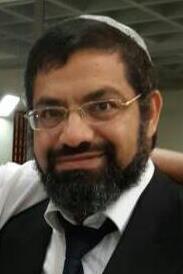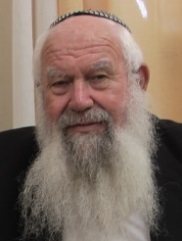Of Tablets and Hearts
By: Rav Aharon Friedman
Rosh HaYeshiva
At the end of Parashat Mishpatim, Moshe Rabbenu is commanded to ascend to Har Sinai to receive the two luchot:
וַיֹּאמֶר ה' אֶל מֹשֶׁה עֲלֵה אֵלַי הָהָרָה וֶהְיֵה שָׁם וְאֶתְּנָה לְךָ אֶת לֻחֹת הָאֶבֶן וְהַתּוֹרָה וְהַמִּצְוָה אֲשֶׁר כָּתַבְתִּי לְהוֹרֹתָם
The Lord said to Moshe, “Come up to Me on the mountain and wait there, and I will give you the stone tablets with the teachings and commandments which I have inscribed to instruct them.” (Shemot 24:12)
Given that the goal of ascending to Har Sinai was to accept the luchot, we would have expected Moshe to go up to the mountain and return back to the nation that very same day. This was not the way that things played out though. Moshe went up to Har Sinai and returned only forty days (and forty nights) later. This begs the question: What was Moshe doing on the mountain for this forty-day period?
Many sources indicate that Moshe spent these forty days absorbed in Torah learning. For example, the Midrash Lekach Tov teaches:
What was Moshe busy with for forty days and forty nights? Rather, this [verse] teaches us that he learned the depths of the Torah and the mitzvot directly from God, and, if Moshe, who heard it directly from God, needed to learn for forty entire days, then certainly it is incumbent upon a far more simple person to toil in the Torah. About such an individual, the verse states: “The appetite of a laborer labors for him, because his hunger forces him on” (Mishlei 16:26). Fortunate is the person who toils in Torah and mitzvot and serves his Creator in truth. (Midrash Lekach Tov, Mishpatim, 24:18).
And yet, though we certainly accept the approach of our Chachamim, and their explanation of Moshe’s extended stay on the mountain is indeed logical, given that it is impossible that Moshe would have remained idle on Har Sinai for such a long time, it is still important to clarify why it was necessary for Moshe to remain immersed in Torah learning for such a prolonged period in order to receive the luchot.
It seems that the answer to our question can be found in a series of pesukim in Mishlei that describe the guidance that a wise man extends to his son:
בְּנִי שְׁמֹר אֲמָרָי וּמִצְוֹתַי תִּצְפֹּן אִתָּךְ: שְׁמֹר מִצְוֹתַי וֶחְיֵה וְתוֹרָתִי כְּאִישׁוֹן עֵינֶיךָ: קָשְׁרֵם עַל אֶצְבְּעֹתֶיךָ כָּתְבֵם עַל לוּחַ לִבֶּךָ:
My son, heed my words and store up my commandments with you. Keep my commandments and live, my teaching, as the apple of your eye. Bind them on your fingers; write them on the tablet of your heart. (Mishlei 7:1-3)
The wise man instructs his son to take the Torah and the mitzvot, bind them to his fingers and inscribe them on the tablet of his heart. In our parasha too, the pesukim use similar words to discuss the luchot that were given on Har Sinai: “the stone tablets with the teachings and commandments which I have inscribed to instruct them”, and the commentators identify “the teachings and commandments” as the Aseret Ha’dibrot (see the commentaries of Rashi and Ibn Ezra).
While the Torah can certainly be inscribed upon tablets of stone, this is not nearly enough; it falls short of the real goal. The words of the Torah must also be imprinted on the “tablet” of each person’s heart. It stands to reason that this was Moshe’s primary objective during the period of forty days and forty nights that he remained on Har Sinai. Moshe Rabbenu devoted himself to inscribing the Torah upon his heart. Only when the Torah was firmly etched on the tablet of his heart and soul was he able to receive the tablets of stone from Hashem, the luchot that represented the hearts of the entire nation.
Perhaps this is the reason that the Aseret Ha’dibrot are divided into two distinct sections. On the right side of the luchot we find the positive commandments (beginning with the positive command of ‘I am the Lord your God’ and the ensuing prohibitions that are an extension of this positive command, and continuing with the positive commands to keep Shabbat and honor one’s parents). On the left side of the luchot we find the prohibitions (from the command of ‘You shall not murder’ until ‘You shall not covet’). The stone tablets directly target man’s heart. The right side of the luchot addresses the right side of the heart, the seat of the yetzer ha’tov, the positive inclination to engage in positive behaviors. The left side of the luchot is directed at the left side of the heart, the yetzer ha’ra, the seat of human passion that must be restrained and kept in check. (In fact, our Chachamim deduce a similar idea from the pasuk that we recite in Shema, “with all of your hearts – with both of your yetzarim”, your yetzer ha’tov and your yetzer ha’ra).
Like Moshe who ascended to Har Sinai, any individual who wants to accept and embrace the Torah in our day and age, ascends to yeshivot and other centers of Torah. Just as Moshe readied his heart for the inscription of the Torah, we are commanded to subjugate our hearts to learning Torah. A person who adequately prepares his heart and inscribes the Torah upon it will certainly earn the blessing that David, king of Israel, extends in Tehillim: “The teaching of his God is in his heart; his feet do not slip” (Tehillim 37:31).
This dvar Torah originally appeared in Hebrew in Eshkolot, vol. 366, Parashat Mishpatim 5776
Shiur ID: 8868
Do you have a comment or question on the shiur?
Comment below and we'll join the discussion
Add your comments:

 (1).jpg)




